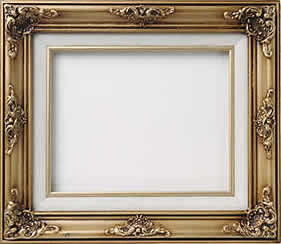
 |
|
 Conservation framing is framing using the highest quality material designed to protect paper art. Special techniques and procedures are used to protect the work, and no process that is not reversible is used to leave the artwork in its original state. General components of conservation framing consist of the frame, the glazing, the mat (if used) or spacer, the backing and the hinging. Mats, backing, hinging and glazing must consist of 100% acid free material of conservation quality approved by the Library of Congress. Hinging should be of acid free materials with a water based activated adhesive. Pressure sensitive adhesives should never be used on paper as these change character over time and may migrate into the paper. To retain the original state of the artwork, it should not be cut, folded or mounted or glued to backing boards. Conservation framing is generally used for paper artwork and documents, but it should be used anytime a high degree of protection and preservation is desired for a framed piece, such as family photos, historic documents or photographs and important mementos. Everything deteriorates over time and exposure to the environment. Conservation framing is designed to minimize deterioration and avoid contributory deterioration by the materials that surround the artwork. Here are some of the problems facing framers: High temperature and humidity levels These will accelerate growth of mold inside frames. Mold is often seen as a ghostly image on the glazing material. But note that mold formation cannot be totally eliminated. The frame should be disassembled every 3-5 years to remove mold that has formed. Condensation Artwork should be spaced from the glazing materials to provide an air space to prevent the condensation of moisture onto the paper and allow a small air space for the inside frame atmosphere to adjust for increased levels of moisture in the air. Spacing is achieved by the use of a mat or spacer between the glazing and the artwork. Sudden changes of temperature and humidity should be avoided as heavy condensation may wet and damage the artwork. Dirt and Dust Problems can also come from atmospheric pollution or dirt or dust. These can combine with moisture in the air to form harmful acids that will attack the paper. Normal dust and dirt may also be absorbed by the paper over time. Light UV rays damage artwork in two ways. Color may be faded by strong florescent lighting or direct sunlight. Paper also tends to absorb high energy photons which causes a chemical reaction in the paper, breaking it down and causing it to turn brittle. The effects of light on materials can be reduced by the use of glazing that filters out harmful ultraviolet rays. |
|
Business Hours Mon-Fri 10 a.m. to 6 p.m. Saturday 10 a.m. to 3 p.m. |